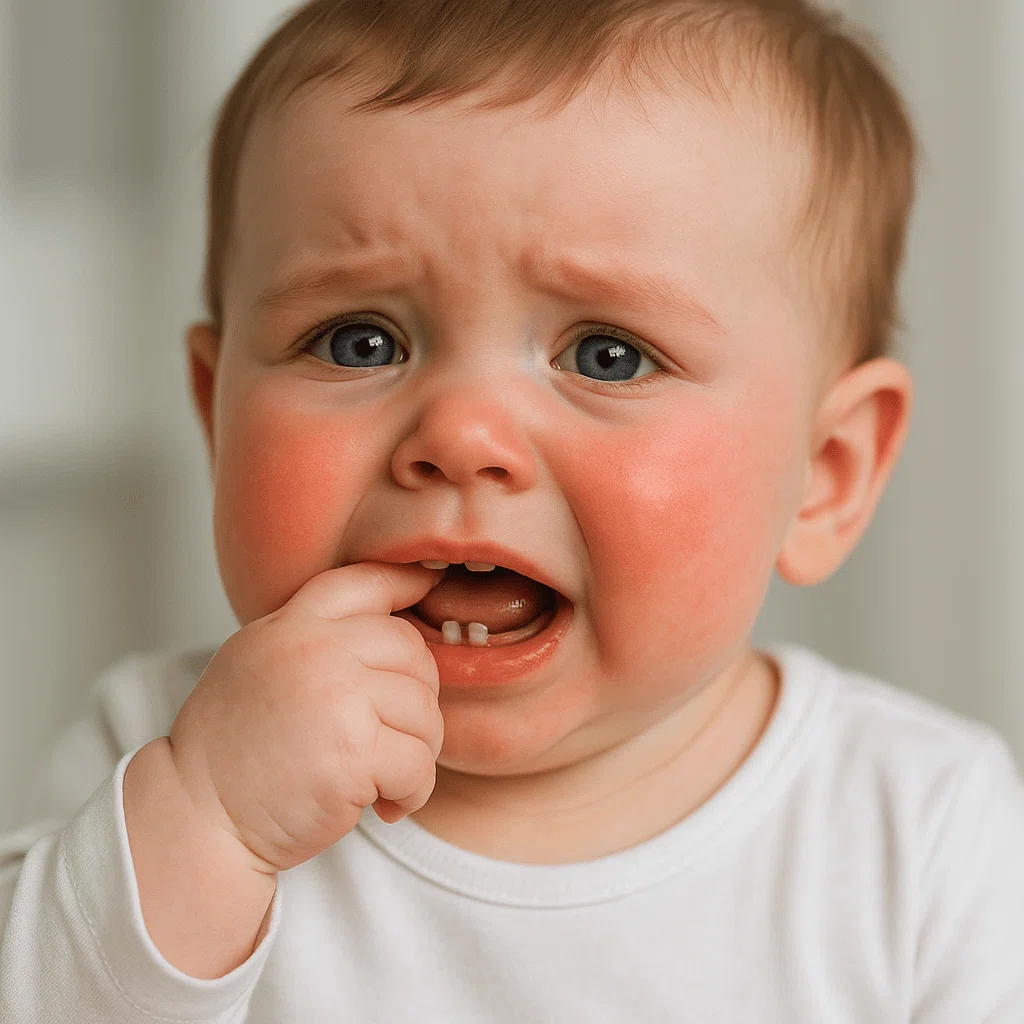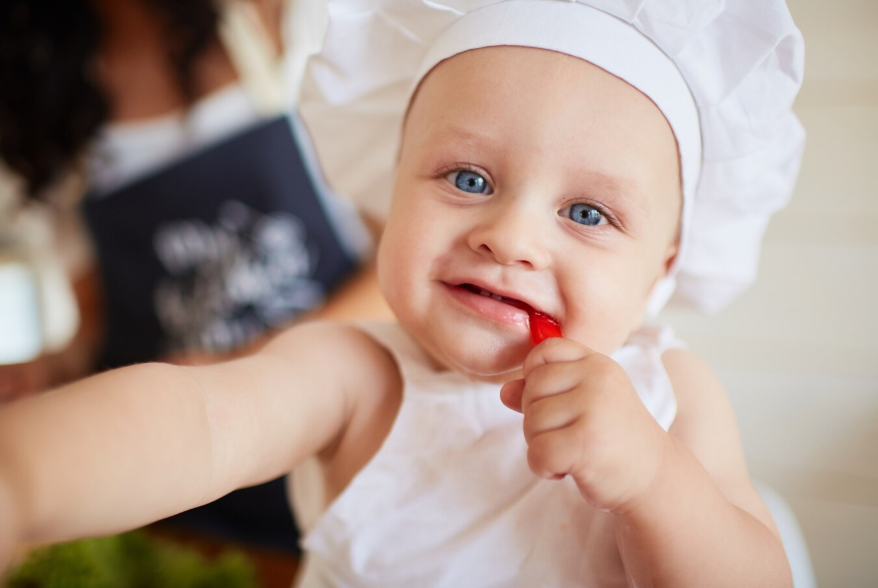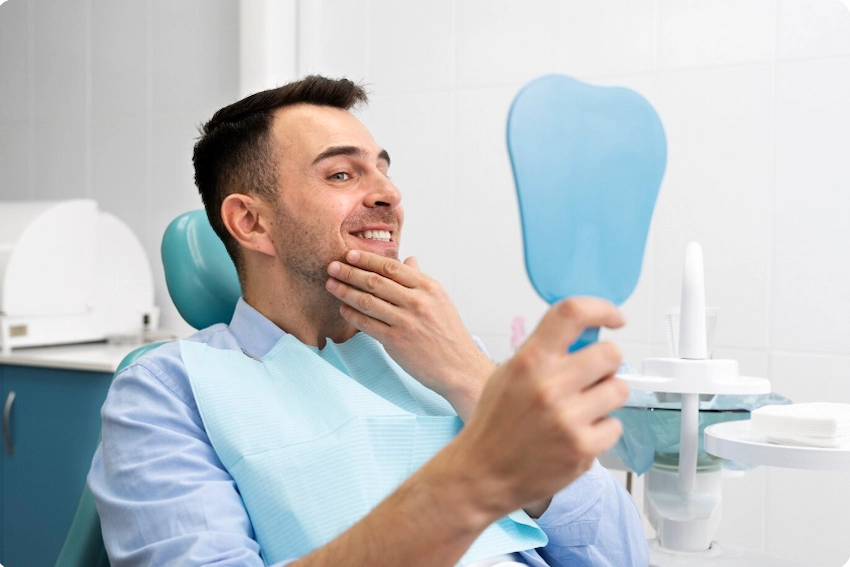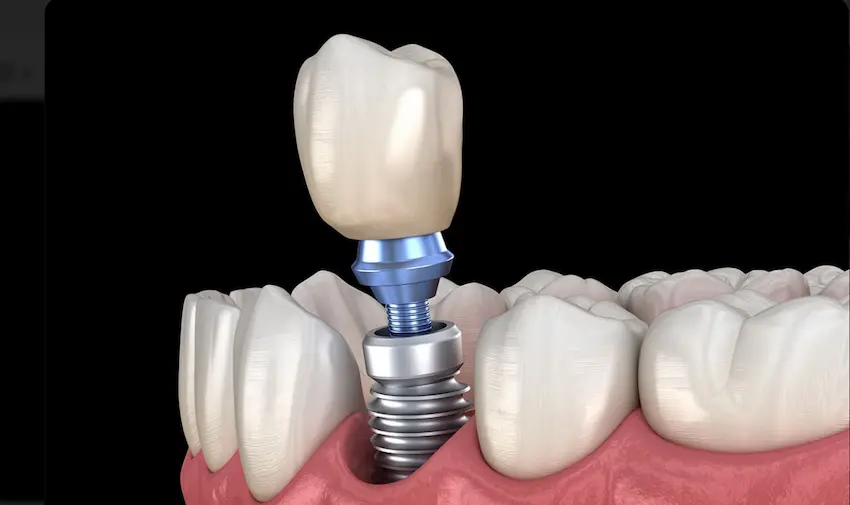👶 Does Teething Cause Fever in Babies?

Teething is undoubtedly one of the significant milestones in your little one’s growth; however, it is also associated with an air of unknowns, discomforting experiences, and sleepless nights. Perhaps it is the most necessary and far-discussed subject among parents and medical practitioners alike – can infants suffer from a fever during teething? And that’s something worth analyzing.
Let us clarify this: while it is possible for teething to trigger “barely detectable” increases in temperature, it should not under any circumstances give rise to any markedly high fever. Therefore, if your baby has a temperature above what would be considered regular or acceptable, it is likely indicative of another ailment, such as a viral infection that is not necessarily connected to the eruption of teeth.
In this article, we are going to thoroughly analyze the relationship between teething and fever, in addition to similarly related symptoms such as flushed cheeks and teething rash, while also offering various home remedies to make your babies teething more comfortable and identify when to seek medical help for their symptoms.
Baby Red Cheeks While Teething – What Does It Mean?
If you observe that the skin on one or both of your baby’s cheeks suddenly becomes all rosy, there is no need for panic – this is a normal indication that your infant is on the verge of teething. Such pinkish cheeks are often visible on the side of the mouth where a new tooth is coming in due to the enhanced circulation of blood and stimulation of the gums below the skin.
Red cheeks are not harmful but can make your baby uncomfortable, especially when paired with drooling or a rash. Moreover, since any other indicators could accompany this condition, it is essential to observe your baby closely for possible signs in order to determine the real cause of the red cheeks.
Signs that your baby’s red cheeks are from teething:
- On one side, the cheek feels warmer or more flushed as compared to the other
- Visible swelling of gums on the area near the cheek
- Cheek rubbing or ear pulling – a common sign of discomfort from teething
- Accompanied by typical teething behaviors – like drooling, biting, or fussiness
Just in case your child has red cheeks in addition to having a temperature that is greater than 38 degrees Celsius (100.4 degrees Fahrenheit), seeking the advice of your baby’s healthcare provider is best in order to rule out any infections or illnesses not related to teething and give him the best level of care possible.
Baby Teething Rash – Causes, Signs, and Solutions

One of those side effects of teething that many parents dread is the teething rash, that stubborn red rash that covers your baby’s mouth, chin, chest, or even neck, and that has you all worried. The constant drooling that oozes from your baby’s mouth as he tries to effort through this tough stage induces the rash that is red, still, gandy, and enhances the drooling problem. He may be comfortable handling the pain and might still be cheerful playing, consuming food, and teething, yet do not perplex the fact that he might still be different.
How to recognize a teething rash:
- Swollen, Red, Eruptions-Alike Skin Around The Mouth Or Chin
- Tiny, Dry, and Flaky Skin Bumps or Patches
- Excessive Gastrointestinal Drooling Results in Wet Bibs, Shirts, Or Swaddling Blankets
Simple Treatment and Prevention Techniques for Teething Rash:
- Keep the Area Dry: Gently wipe away any drool build-up on the baby’s skin with a soft cloth.
- Apply a Barrier Cream such as petroleum jelly or baby-safe ointments in order to prevent further irritation and create a protective minimize.
- Make Use of Absorbent Baby Bibs and Change Them Frequently to minimize the amount of moisture in clothing that can cause skin irritations.
- It Is Important to Avoid Scented Wipes for Children and Strong Soaps in The Red Area So As not To Cause Further Irritation.
If the rash becomes crusty, oozing, or spreads to other areas, it may be a yeast infection or eczema, and you should consult a pediatrician.
What Temperature Is Too High for Teething?
Feeling warmer than usual is not only normal but a great indication that the little one is growing healthy teeth. However, a fever is not expected to arise.
Comparison of Good Temperatures and Alarming Ones:
- ✅ Slight temperature (37.5°C–38°C/99.5°F–100.4°F): Might be due to teething
- ❌ High fever (over 38°C/100.4°F): Most probably it’s not due to teething but illness or any other problem
If the baby is hot, very sleepy, crying all the time or simply not eating or drinking — you should really see a doctor because it could be a high fever, which in turn might indicate a cold, flu, or a urinary tract infection.
How to Soothe a Feverish Teething Baby
Even if your baby’s fever is mild, they may still be in a bad mood or feel uncomfortable. However, you can try the following natural remedies safely at home.
- Cold teething toys: Don’t forget to put teething toys in the fridge and take them out before they’re frozen to relieve gum swelling.
- Gum massage: Wash your hands properly and massage the child’s gums like a massage in a circular manner.
- A frozen washcloth: A wet clean cloth that has been put in the fridge is the best toy to give and let them chew on.
- Giving extra fluids: If your baby’s fever is manageable then try to keep them hydrated, especially when the fever is due to teething.
- Using baby-safe medicine: It would be better if you could follow the advice of the child’s doctor while going for the use of the medicine. Always give infants acetaminophen or ibuprofen according to their age or if the doctor permits.
Can Teething Cause a Fever and Diarrhea in Babies?
Many moms are worried about whether teething can promote fever and/or diarrhea in their children. Yes, it’s indeed a fact that various factors can result in the baby’s temperature variation and increase the baby’s stool frequency, and the most obvious one is the swallowing of saliva.
If your baby has both:
- Check for signs of dehydration (e.g., fewer diapers and a dry mouth).
- Observe if there are any extra symptoms like vomiting or a rash.
- Get in touch with your doctor if the diarrhea persists for more than 24 hours or if blood/mucous is present.
Signs That Your Baby’s Fever Isn’t From Teething
It’s very easy to think that practically every symptom is due to teething — however, this may be dangerous if the problem is something of a more serious nature.
When you should call the pediatrician:
- Fever higher than 38°C (100.4°F) occurring for more than a day.
- Diarrhea, vomiting, or signs of a cold.
- The baby is more sleepy or irritable than usual.
- Feeding insufficiently or refusing to drink fluids.
- Rash or the spread of the rash and signs of it being infected.
It’s always best to be on the safe side. A doctor can tell you if it is just teething or if something needs to be treated.
Frequently Asked Questions About Baby Teething and Fever
Teething can cause a little rise in temperature but it’s important to note that a very high fever (over 38°C or 100.4°F) is not associated with teething and may signal that a child has been affected by an illness.
Red cheeks occur possibly due to the enhanced flow of blood as well as irritation of the gums under the skin. It’s a very common and harmless teething symptom.
The damage on the skin from the saliva is the teething rash and it is treatable with the use of a barrier cream and avoiding irritating products. This way, the skin will heal as fast as possible.
Begin with cooling the baby’s gums, let him/her drink some fluids, provide him with extra comfort, and follow the instructions of the doctor if you want to use medicines that reduce the fever. Good quality time with your child is also very important for them to feel better themselves.




